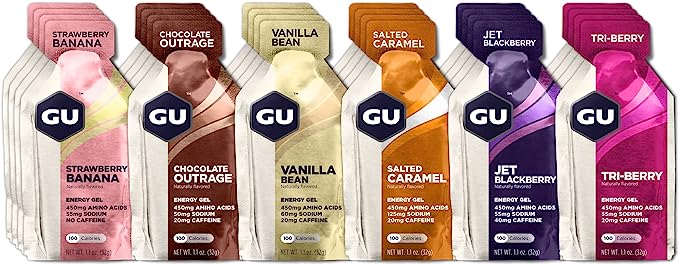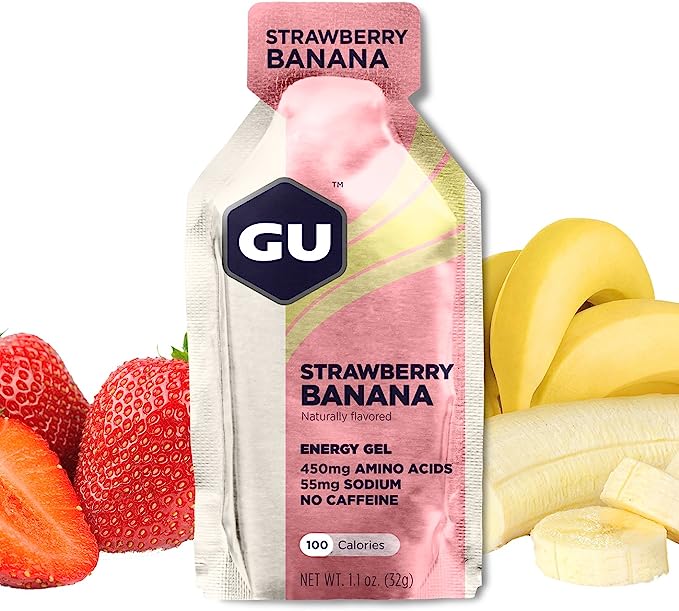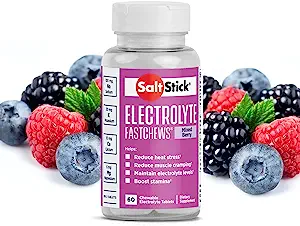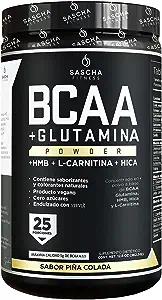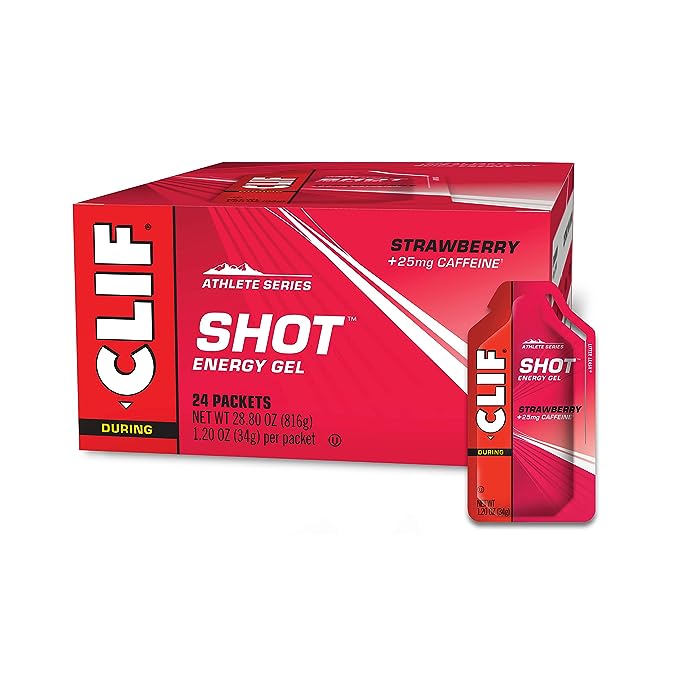Cycling Nutrition: What to Eat and Drink During and After Riding
Every cyclist has their unique recipe for success when it comes to what they consume during a ride. However, beneath the variety of preferences, some universal principles govern the world of cycling nutrition like the diet plan or cycling plan. These principles provide a solid base upon which every cyclist can tailor their own fueling strategies for maximum efficiency.
Important Cycling Nutrition Principles
Hydration in cycling nutrition strategy
No matter the food strategy, if you’re not hydrated, your muscles won’t get the energy they need efficiently. Proper hydration is the backbone of any effective nutrition plan.
One study in the Journal of Sports Sciences found that cyclists had increased perceived pain during a long ride when dehydrated. In other words, the symptoms of not consuming enough water certainly won’t help you crush any performance goals.
Regardless of your diet, without adequate hydration, the energy from the food can’t efficiently reach the muscles or might linger in the stomach, causing discomfort or nausea. Dehydration hampers digestion by slowing down the stomach’s emptying process and the movement of the intestines. While the initial effects might be subtle, the complications amplify as dehydration intensifies.
Carbohydrates: The Powerhouse for High-Intensity Cycling
Training with low carbohydrate reserves has its place. Yet, when the tempo ramps up in interval sessions or competitive races, it’s carbohydrates that fuel those rigorous bursts. Without enough carbs, cyclists might notice a dip in their power, stamina, and overall performance. Think of cycling as an ebb and flow of intensities. While the leisurely stretches are mostly powered by fats, those pivotal moments in group rides or races demand a carb boost. Just as these critical moments thrive on carbohydrates, so do the high-intensity training sessions that prep cyclists for them.
Thus, crafting the right cycling nutrition isn’t just about the ride’s duration. It also hinges on its intensity.
Balancing Carbohydrate Intake While Cycling: Quality Over Quantity
Having carbs during your cycle is essential, but moderation is key. General sports nutrition guidelines advise an intake of 30-60 grams of carbohydrates every aerobic exercise hour. This is grounded in the understanding that our bodies can typically absorb roughly 1 gram of carbohydrates every minute. However, it’s not about consuming to the maximum limit. Only during particularly long or intense rides, where carbohydrate depletion is more likely, should one consider inching closer to the 90 grams/hr mark.
To make carb intake more precise, I advocate for syncing it with your hourly energy expenditure, measured in kilojoules. For those using a power meter, it’s a boon. Aim to replenish 20-30% of the energy you expend each hour with carbohydrate calories.
A quick note: when we talk about ‘Calories’ with a capital ‘C’, we’re referring to kilocalories. To paint a clearer picture, consider a moderately fit male cyclist. If he’s exerting around 500 kilojoules/hr, which is typical for a sustainable endurance pace, he should target an intake of 100-150 Calories (or 25-37 grams) of carbs every hour for rides surpassing 90 minutes. However, when racing or pedaling with a swift group that pushes him to a demanding 800 kilojoules/hr, his carbohydrate needs might rise to 40-60 grams hourly.
Finding the Balance: Eating on the Bike
Finding the right balance of fuel when cycling is critical. Here’s a breakdown of the key points you’ve outlined:
Overeating vs. Under-eating
While it’s vital to consume enough energy to sustain your rides, particularly the longer ones, overeating can be a critical error. When you consume more than your body can efficiently process, that excess food can linger in the stomach. The result? Discomfort, bloating, and potentially nausea. Having to slow down and wait for the feeling to pass can be demotivating and can significantly impact your ride’s enjoyment and performance. On the other hand, if you find yourself slightly under-fueled, you can relatively quickly rectify the situation by consuming a small amount of carbs. This can rapidly restore energy levels, especially if you’ve stayed adequately hydrated.
Quick Recovery
The advantage of erring on the side of slight hunger is that the remedy is swift. In around 10 minutes, with an intake of about 20-25 grams of carbohydrates, you can often feel replenished and ready to push on, provided hydration has been maintained.
Hydration vs. Energy
While there are numerous sports drinks packed with carbs, it’s vital to distinguish between hydration needs and energy requirements. Your body’s ability to absorb carbohydrates doesn’t increase in line with your hydration needs, especially in warmer conditions. By separating your liquid intake from your food energy, you gain greater flexibility in adjusting your consumption according to varying conditions. This distinction allows you to hydrate effectively in hot weather while controlling your carbohydrate intake to match the ride’s intensity.
In essence, while fueling during cycling is essential, it’s about quality and timing rather than sheer quantity. Consuming the right amounts at the right times, considering both energy and hydration independently, can lead to a more comfortable and efficient ride.
Pre-Ride Nutrition: Fueling Your Body for Optimal Performance
Every cyclist knows that the ride doesn’t start when you hop onto the saddle; it begins much earlier, with the choices you make in your pre-ride nutrition. Fueling your body appropriately before you set off can make a significant difference in your energy levels, stamina, and overall performance during the ride.
The importance of pre-ride fueling cannot be stressed enough. Just like a car needs gas to run efficiently, your body requires the right kind of nutrients to sustain energy and prevent early fatigue. Skipping out on proper nutrition or making poor food choices can lead to premature exhaustion, muscle cramps, and even dizziness during your ride.
When it comes to ideal foods and drinks, carbohydrates reign supreme. They are the body’s preferred source of energy for aerobic activities like cycling. A meal or snack rich in complex carbohydrates, such as whole grain bread or pasta, oatmeal, or brown rice, can provide a steady release of energy. Pairing these with a moderate amount of protein—like yogurt, eggs, or a smoothie with a scoop of protein powder—can help in muscle preparation and repair. Remember, it’s not just about carbs; ensure you’re incorporating a balanced meal with healthy fats and proteins too. Hydrate with plenty of water, and if you’re gearing up for an especially long ride, consider an electrolyte drink to maintain fluid balance.
Here are the top 4 cherry-pick carbohydrate snacks fueling your cycling nutrition.
Timing and portion recommendations are crucial. Ideally, aim for a larger meal about 3-4 hours before the ride. This gives your body ample time to digest. If you’re short on time, a smaller snack 30-60 minutes prior can also do the trick. Avoid large quantities of fats or overly sugary foods right before the ride, as they can cause sluggishness or quick energy spikes followed by crashes.
Cycling Nutrition for Longer Rides
Medium Rides (75 minutes to 2.5 hours)
Hydration: Electrolyte drinks or a mix of plain water and electrolyte tablets.
Calories: 25-50 grams of carbohydrates per hour. This could be in the form of energy gels, bananas, or energy bars.
Rationale: As the ride length increases, there’s a progressive reliance on external fuel sources. Hydration with added electrolytes can assist in maintaining muscle function and delaying fatigue. The moderate carbohydrate intake ensures you are getting enough fuel to sustain energy levels without overloading your digestive system.
After the ride: A balanced meal comprising carbs, protein, and healthy fats will aid in recovery. Consuming it within the first hour post-ride is ideal.
Long Rides (2.5 hours and above)
Hydration: Electrolyte drinks. Consider also bringing plain water and consuming based on thirst.
Calories: 30-60 grams of carbohydrates per hour, adjusted based on intensity and individual needs. This can be from a combination of energy gels, bars, fruits, and even sandwiches for very long rides.
Rationale: On longer rides, the body’s energy reserves can be depleted, so external fuel becomes essential. Hydration needs are also higher, especially in hot conditions. Consuming a variety of carbohydrate sources can help maintain energy levels and reduce flavor fatigue.
After the ride: A substantial meal containing a higher ratio of carbs, with protein, will replenish glycogen stores and assist muscle recovery. Adding an antioxidant-rich snack, like berries, can be beneficial. Aim to eat within the first 1-2 hours post-ride.
Cycling Nutrition for Marathon Rides (6+ Hours)
Hydration: The ultimate trio to fuel your cycling ride is a blend of water, an electrolyte mix, and a carbohydrate drink. Especially during sizzling weather or intense rides, always prioritize hydration separately from energy.
Caloric Needs: Keep it simple. If you’re aware of your energy burn rate, aim for 20-30% of that hourly rate. If not, target between 30-60 grams of carbs every hour. Remember, as your ride stretches on, it’s tempting but risky to overconsume. Stick to these guidelines to ensure your stomach remains your ally.
Ideal Calorie Sources: Wondering what to munch on? Go for what gets you excited to take another bite. The key is variety, ensuring your cycling nutrition remains appealing even hours in.
Why This Matters: When tackling ultra-endurance rides, the dual challenge is combating taste fatigue and gastrointestinal upset. Even though these long rides tend to have a moderate tempo, rapidly absorbing enough carbohydrates isn’t the issue. The real challenge? Ensuring your nutrition is so enticing that the idea of not eating it seems unimaginable.
Post-Ride Tips: Once you cross that finish line, the ride isn’t quite over. Resist the urge to mentally check out. Instead, freshen up, get changed, and prioritize a nutritious meal. Finish these post-ride rituals, and you’ll wake up the next day feeling rejuvenated. And don’t skip on a light, protein-rich snack before bed to optimize muscle recovery.
Embracing the right cycling nutrition strategy ensures you not only complete these marathon rides but thrive during them. Keep your energy sources tasty and varied, and you’ll have all the fuel you need to conquer any cycling challenge.
Remember:
- Listen to your body. While these guidelines provide a general framework, individual needs can vary based on metabolism, fitness levels, and other factors.
- Regularly drinking small amounts is better than consuming large quantities infrequently. This aids in consistent hydration and reduces the risk of gastrointestinal discomfort.
- Test different nutrition strategies during training rides to find what works best for you, so you are well-prepared for event days.
- Lastly, always ensure you’re well-hydrated before setting off on any ride. Proper hydration starts well before you mount the bike.
Additional Tips for Extra-long Rides (6+ Hours)
Customization is Key: Every cyclist is different, so what might work for one rider may not necessarily work for another. Always test out different nutrition and hydration strategies on your long training rides to find what suits you best.
Solid Food Options: As rides get longer, consider integrating real food like sandwiches, boiled potatoes, rice cakes, or nuts. Not only can these offer a welcome change from gels and bars, but they can also be more satisfying and less likely to cause gastrointestinal issues.
Stay Ahead of Hunger and Thirst: Don’t wait until you’re starving or parched to eat or drink. Consuming small amounts regularly can help maintain energy levels and prevent the dreaded ‘bonk’ or hitting the wall.
Electrolyte and Salt Intake: Especially on hot days, it’s crucial to replace lost salts. Consider salt tablets, or even salty snacks like pretzels or pickles.
Mind Your Caffeine: While caffeine can be a great boost, especially in the later stages of a ride, it’s essential to use it wisely. Too much can cause jitters or exacerbate dehydration.
Keep Foods Accessible: Use a top tube bag or jersey pockets to keep snacks handy. This ensures you can eat even when the pace picks up or the terrain doesn’t allow for stopping.
Plan Ahead: If you know there will be rest stops or places to refill, plan your nutrition around them. This way, you can restock on water and food items if needed.
Recovery: Apart from the post-ride meal, consider recovery drinks that combine carbs and protein. This can speed up muscle recovery, especially when consumed in the crucial 30-minute window post-ride.
Supplementation for Cycling Nutrition Principle
Cycling is not just about the hours you put in training; it’s also about the finer details of your cycling nutrition strategy. While a balanced diet is fundamental for any cyclist, there are times when supplements can give you that extra edge, ensuring you’re at your peak performance. But with a plethora of options available, how do you choose what’s right for you?
Popular supplements in cycling nutrition range from the basic to the advanced.
At the foundational level, electrolyte tablets are a mainstay for many. Given the sweat and exertion of a long ride, replenishing lost salts and minerals becomes crucial. Electrolyte tablets can help in preventing cramps and maintaining hydration balance. Branch Chain Amino Acids (BCAAs) are another popular choice. They support muscle recovery, reduce fatigue, and can potentially improve endurance. For those needing a quick pick-me-up, caffeine is often the go-to. It’s not just for waking up in the morning; caffeine can boost alertness, improve mood, and even enhance endurance during prolonged exercises.
The question is: when and how should you use these supplements?
Electrolyte tablets are best consumed during or after a rigorous cycling session.
BCAAs can be taken before, during, or after your ride, depending on individual preferences and the intended effect.
Caffeine is typically consumed before a ride but remember – its effects can vary based on individual tolerance.
However, like all good things, moderation is key. Precautions and potential side effects should always be kept in mind. Overconsumption of electrolytes can upset stomach balance, while excessive caffeine can lead to jitters, insomnia, and increased heart rate. Always consult with a healthcare professional before introducing any new supplement to your cycling nutrition strategy. Read more here.
Conclusion
Effective cycling nutrition isn’t just about consuming the right type of fuel but also about understanding the demands of your ride. Once you grasp these basics, you can adapt them to any ride length or intensity, ensuring you’re always at the top of your game.


